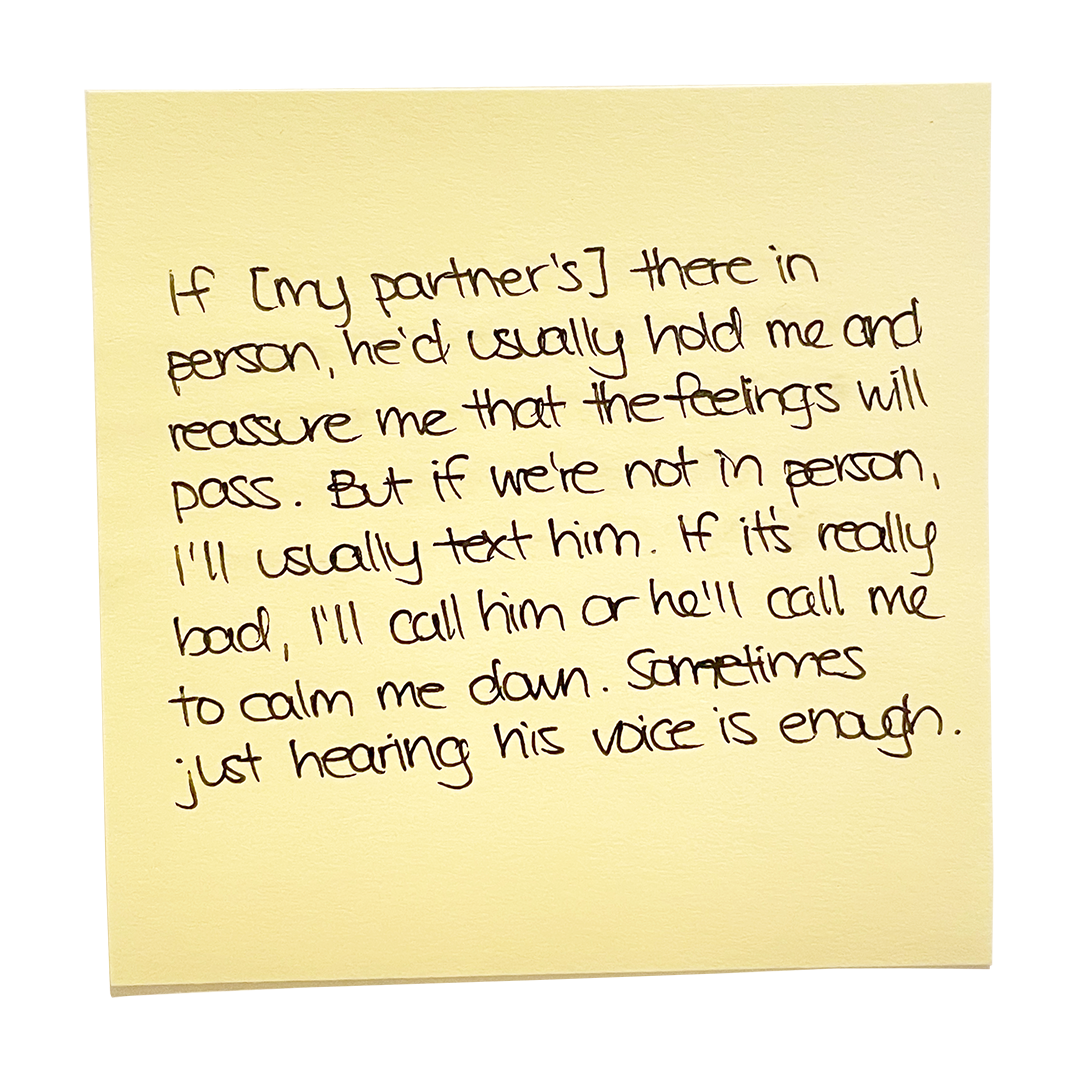


Here
How might we help people better communicate with their loved ones during moments of anxiety?
Year
2020
Purpose
Design Sprint / Case Study
Work
Concepting
UX/Qual. research
Strategy
Brand/Visual
Product Design
Care in times of crisis
Each year, it’s estimated that 1 in 5 people in Canada personally experience a mental health problem or illness. Mental illness indirectly affects Canadians of all ages, education, income levels, and cultures, whether through a family member, friend or colleague.
But when it comes to finding solutions for mental health, the journey can feel quite daunting and isolating. While those with access to counselling can seek guidance from a therapist and build tools for coping, not everyone has the means to explore this option.
The following is a one-week design exploration into how we seek and receive care during moments of distress and a look into the act of reaching out.
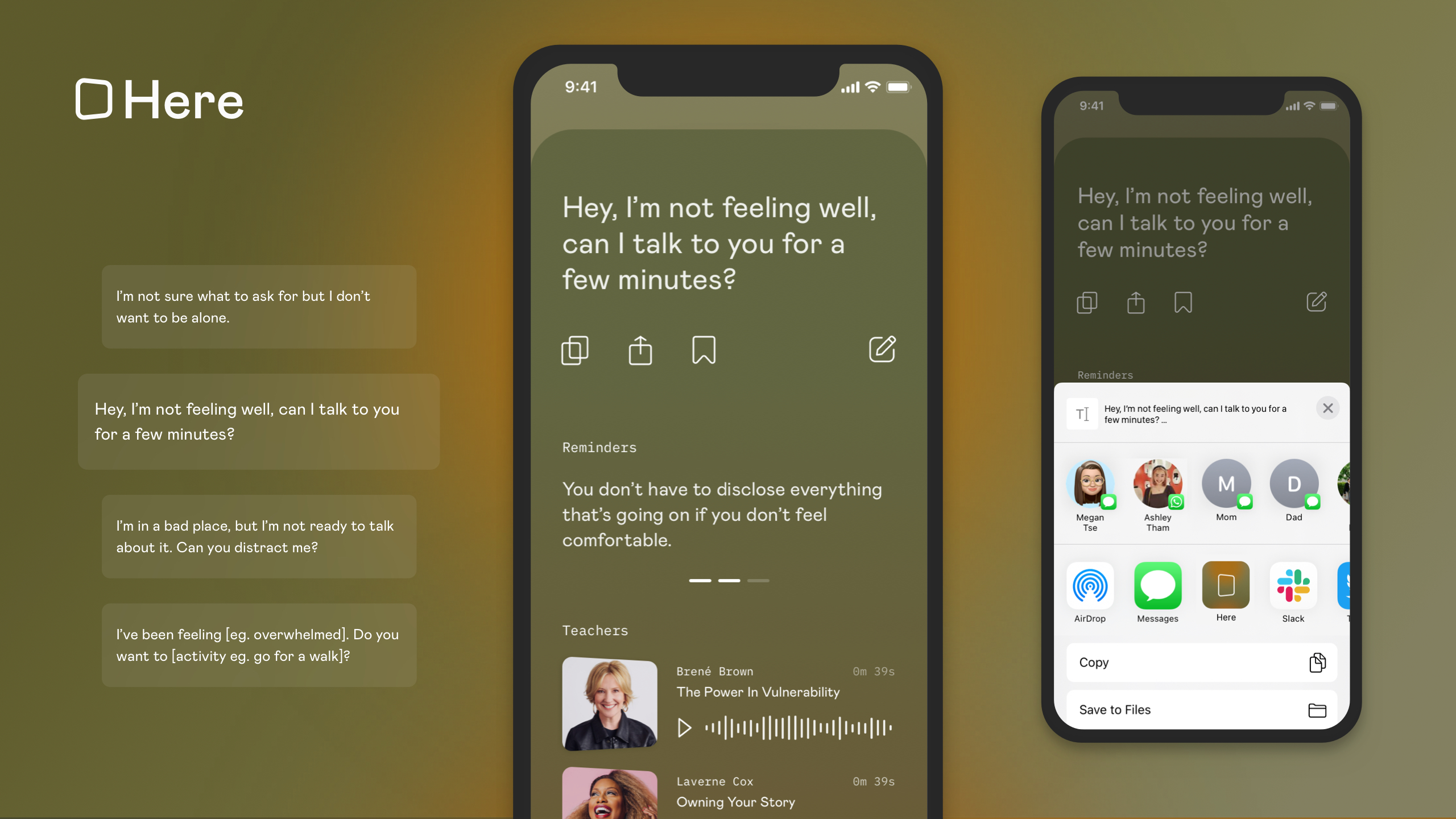
Understanding distress
Through secondary research and interviews with a small sample size of 12, we describe ‘moments of distress’ as a range between high-levels of anxiety to experiencing panic attacks and/or triggers.
The image below maps out a rough journey of an individual experiencing mental distress in 6 stages: Build Up, Trigger, Distress, Reaction, Recovery, and Reflection. By no means is this strictly a linear path; some might only experience parts of it, while others oscillate between stages.
The main culprit, however, that stunted people's progression was fear. Fear of being misunderstood, fear of rejection, fear of being stuck. Those less likely to reach out to a friend or loved one were more likely to experience longer periods of mental distress and difficulty reaching 'Recovery/Reflection.'
So how might we help people better communicate with their loved ones and themselves during moments of anxiety? Like we do as kids, sometimes the first step towards learning is leading by example.

Here, a tool for better
communication
Meet Here — a place to help you reach out, provide support, and learn what support means to you.
Whatever you’re moving through, you don’t have to carry it alone. Find pre-written messages to relieve some of the anxiety of reaching out and express what you need. Modify it to what feels best for you and send it to a loved one through your favourite messaging app.
By partnering with experts in the field of emotional intelligence — from renowned authors, licensed practitioners, researchers, and resilient story-tellers — Here provides healing conversations around support, what it looks like, and how to provide it. Listen to their words and stories directly through audio-clips and premium classes.

Art Direction
Here reflects a opening to your loved ones and support for your well-being.
Expanding on the metaphor of a window, our visuals and colour treatment draw inspiration from the outdoors. Exploring earth tones, light, and soft translucencies, this treatment aims to evoke a sense of warmth and security, much like that of our loved ones.
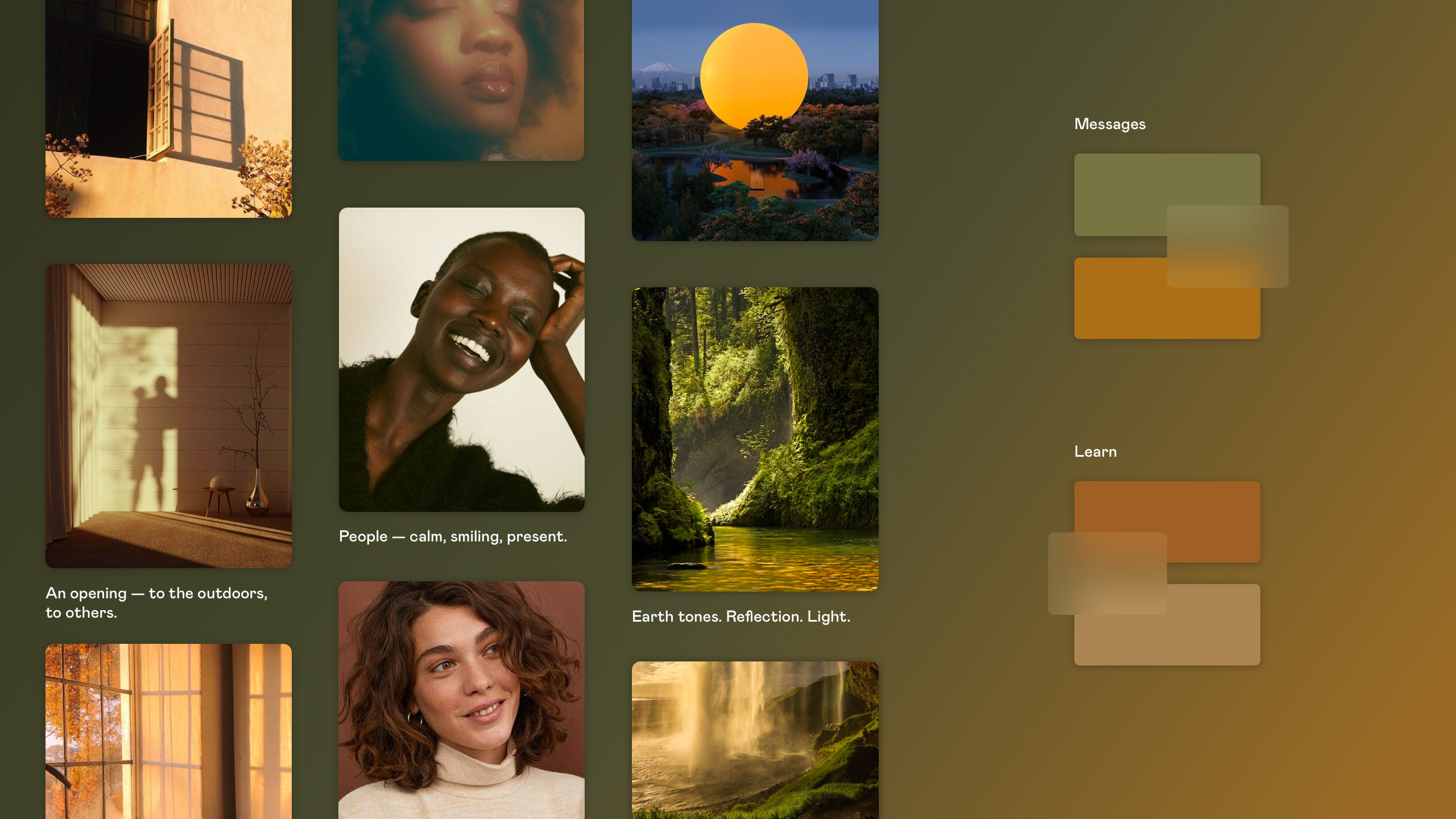
Key Insights
Here aims to address 3 key insights found through our interviews:
1
It’s hard to know what support looks like and how to receive it.
It can be hard finding support when you're unsure of what you need, what feels best, and how to go about asking for it. The 'Learn' tab on the app aims to provide users with the right resources and content to explore different forms and examples of support.
As they navigate to the 'Messages' tab, this is where they can learn word for word on how to go about communicating it to others. Your loved ones might not always know what to say or even say the wrong thing, but learning how to communicate your needs is an important stepping stone in understanding and supporting one another.
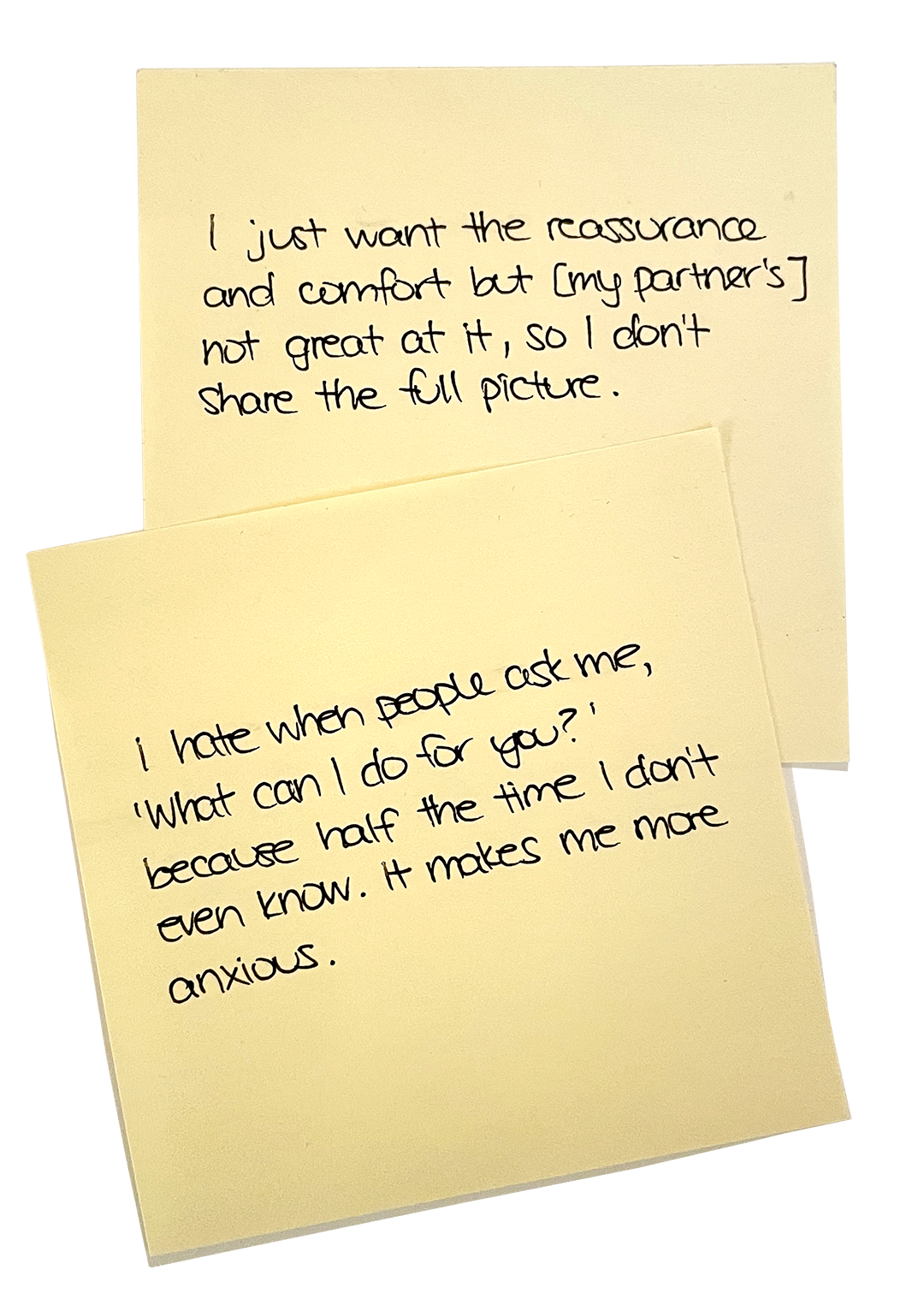
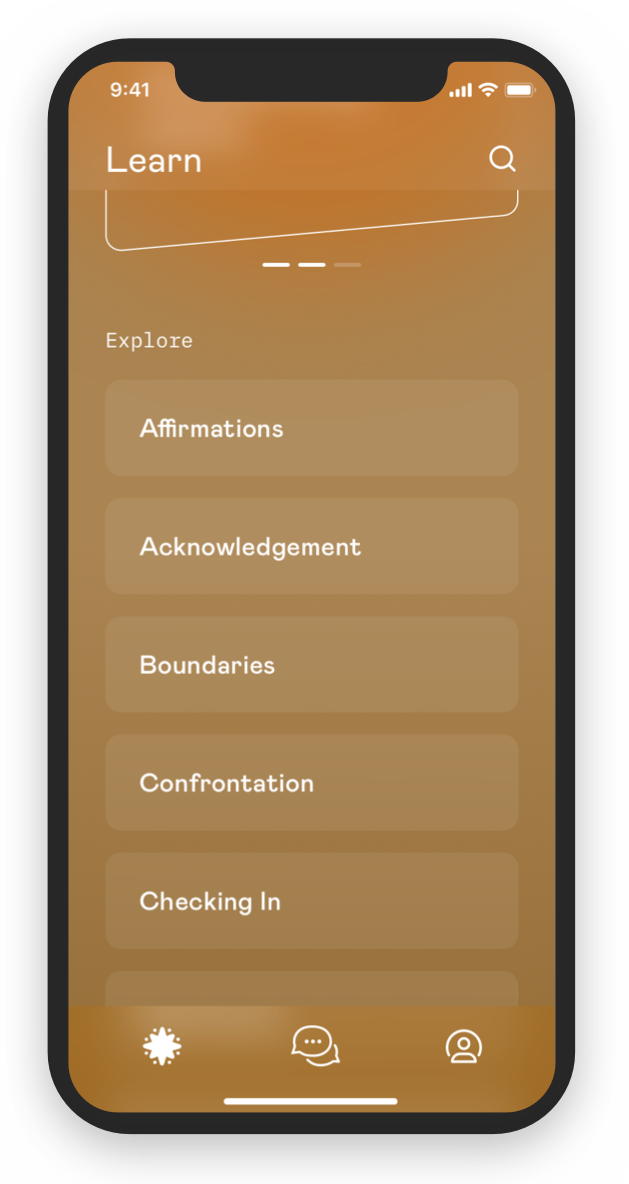

2
Being a burden, and the feeling like you have to go through it alone.
Pushing others away only makes the person feel more isolated and alone, confirming the false belief that they're better off keeping to themselves. They might think about reaching out, but the thought of being a burden prevents them from speaking up and receiving support. Here lowers the barrier to reaching out by providing pre-written messages that users can edit and send out. In each pre-written message, we also include 'reminders' and words of encouragement as a form of positive reinforcement to help fight those feelings of being a burden and prevent users from abandoning the app.
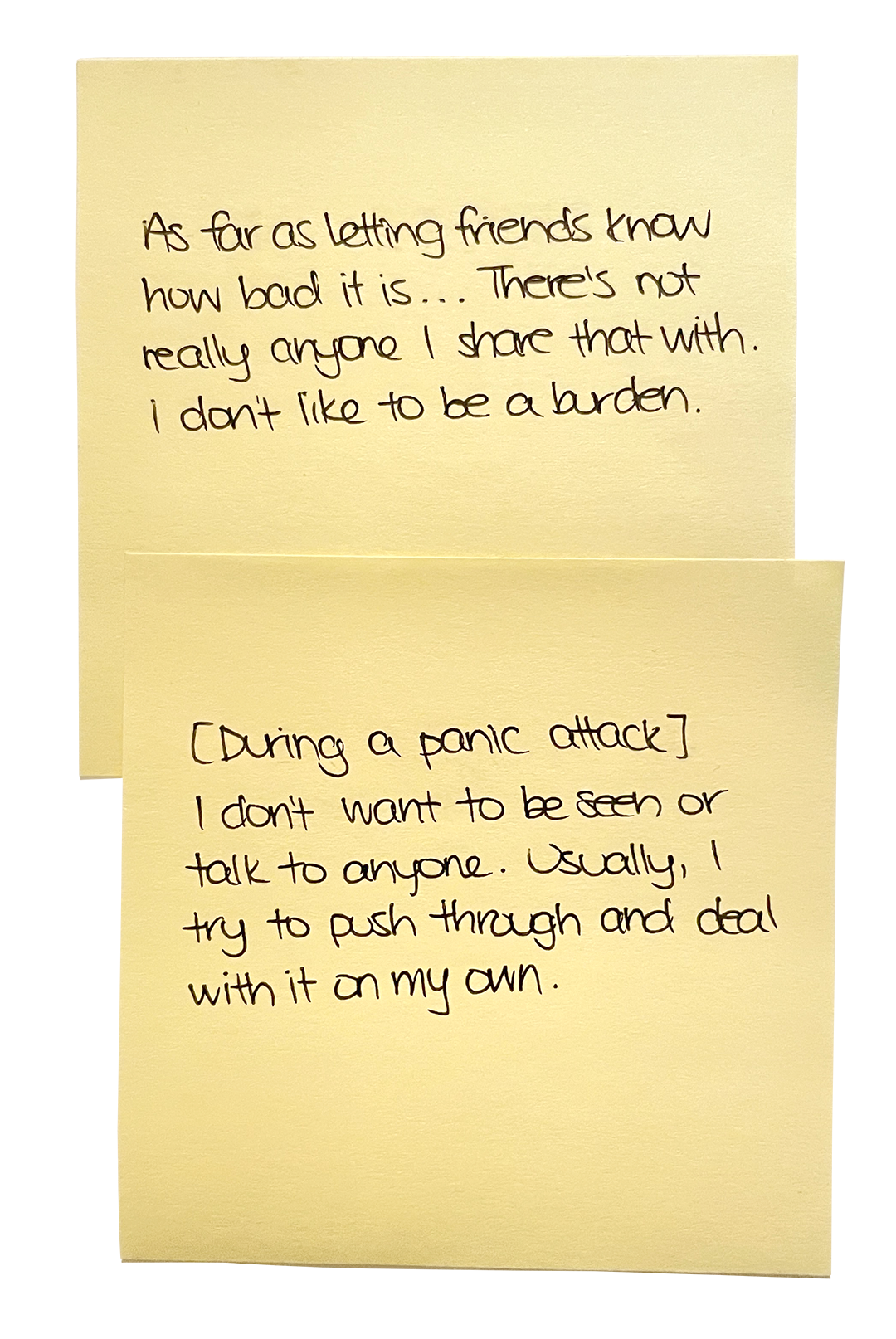


3
The power of human connection.
There's something grounding about talking to someone else and hearing a voice other than your own. Audio is a great way to soothe ourselves when we're feeling overwhelmed and over-stimulated. It gets us out of our heads, but it's also a medium that allows for passive and active consumption. We use audio content on the 'Learn' tab to help our teachers feel more personable and more human.
Through apps like Calm, it's proven that listening to a soothing, slow, and steady voice helps calm listener's minds. We leverage the voices and wisdom of our partnered experts on the app in every pre-written message as well, providing an additional touchpoint with the user as we encourage them to reach out.
While we can't physically bring your loved ones to you, a feature that could also live on the app is recording or storing your own voice-notes to listen to when you're feeling down, whether it's an uplifting message from a friend or your past self.
